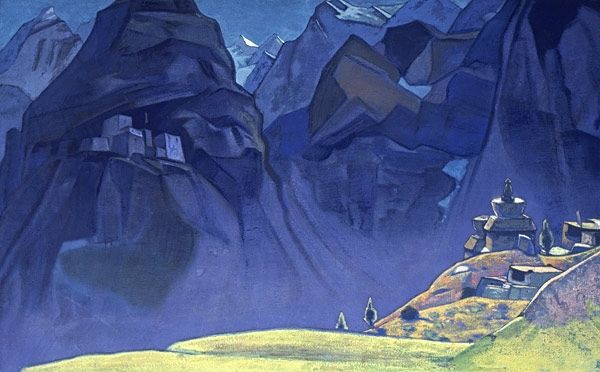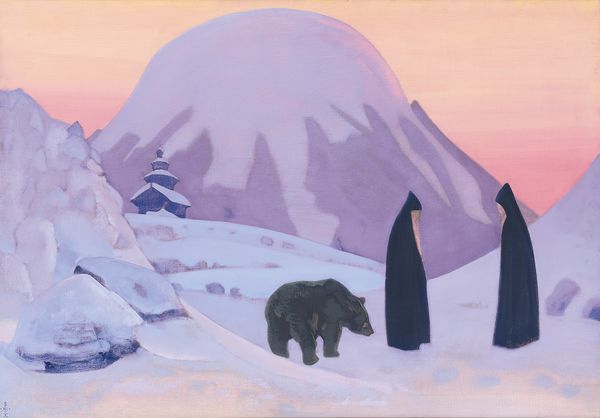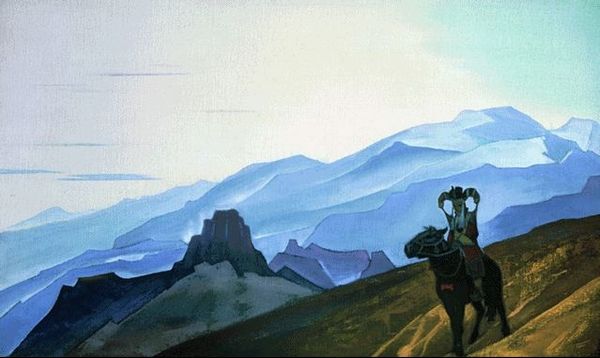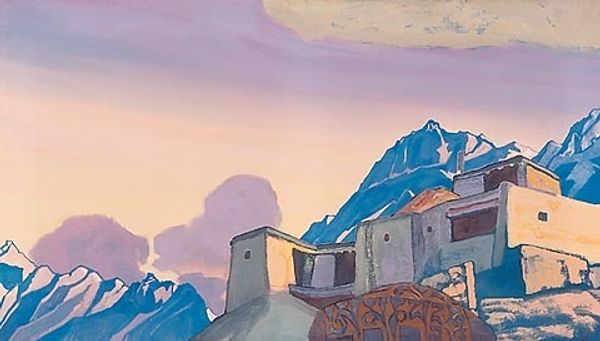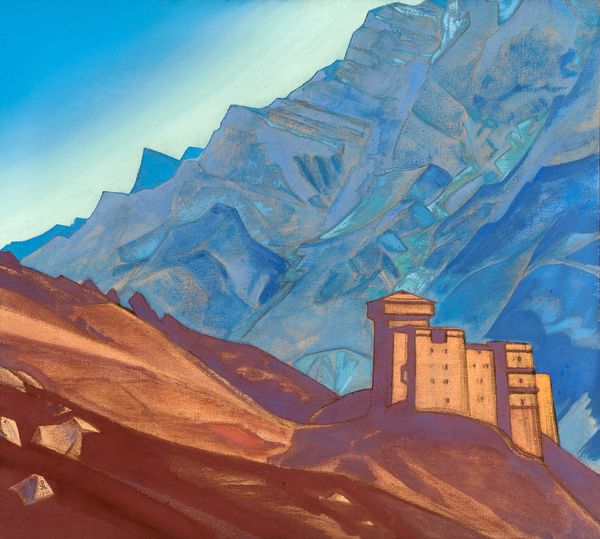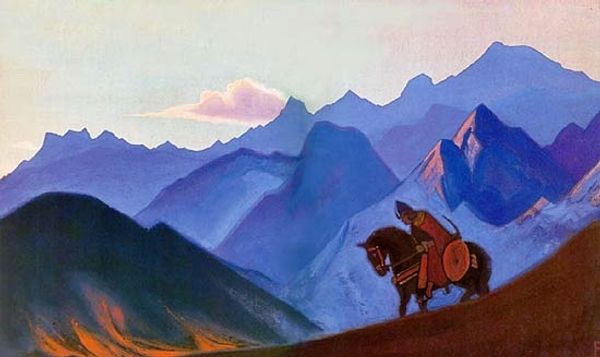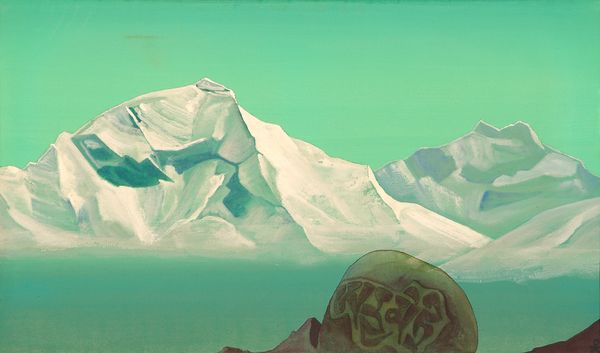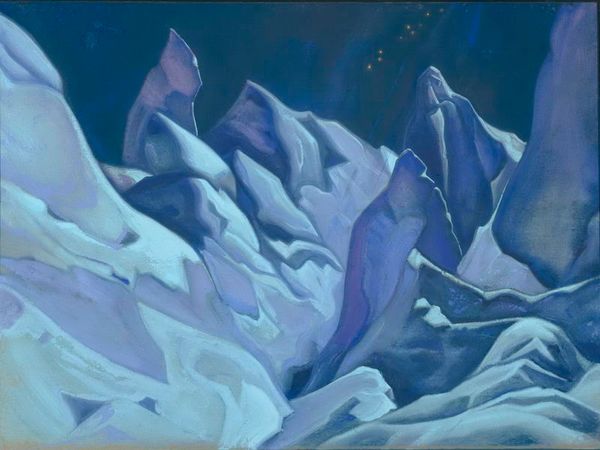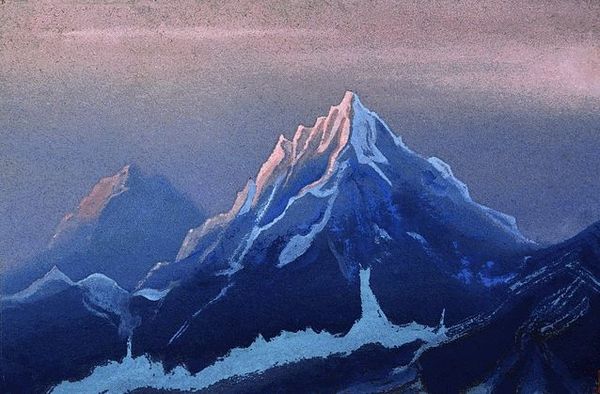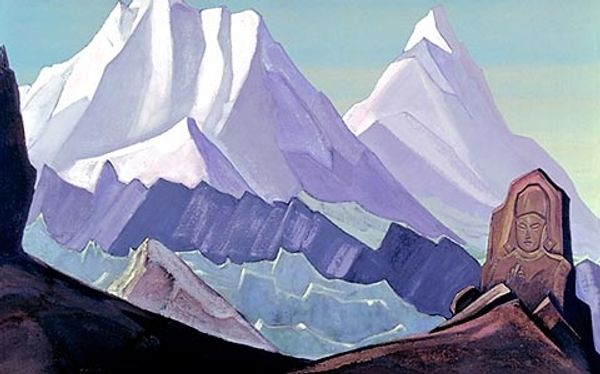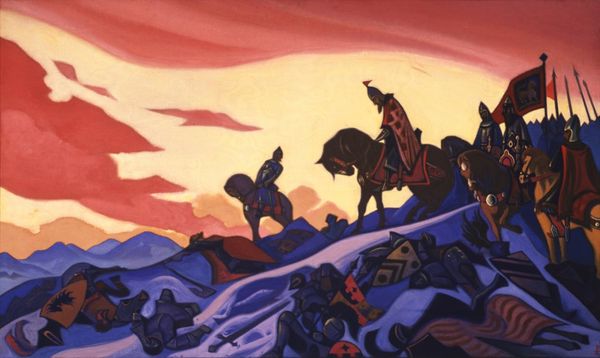
Dimensions: 74 x 117 cm
Copyright: Public domain
Curator: Standing before us is Nicholas Roerich's tempera painting, "Devidar Narsinga," created in 1932. It currently resides at the Allahabad Museum in India. It gives off a quiet hum, doesn’t it? Editor: Absolutely. I am immediately struck by the chill—not just visually with those formidable, angular peaks, but also emotionally. It feels like a landscape of stoic endurance. There’s a profound silence emanating from the canvas. Curator: Roerich lived quite an incredible life! A painter, writer, archeologist, philosopher, explorer—the man had fingers in all sorts of pies, you might say. What he was interested in, I think, was how art and spirituality connected us. And in that search he became fascinated with Eastern philosophy, and landscape became more than just landscape to him; they became spiritual landscapes. Editor: You can certainly see that. The prominent tree, laden with what appear to be ritual offerings—the colorful fabrics, small shrines— immediately draws the eye, transforming the landscape into something imbued with symbolic meaning. Do these strike you as primarily Buddhist or Hindu symbols, or both? Curator: That’s precisely it—that melding is so important to Roerich's world view. He sought after shared roots across various spiritual traditions. And while these kinds of monuments or sacred groves might have originated within a particular faith, they've almost always evolved over time to be broader expressions of reverence. The mountains themselves function symbolically as guardians or sacred presences. Editor: The figure on horseback in the lower left corner contributes to that sense of a timeless journey. It's as if this traveler has come to this place to connect with something greater than themselves, and in many ways the journey, in all its stark reality, allows us to discover what that thing is we connect to. The composition funnels our gaze toward the snowy peaks, those silent witnesses, looming there in the distance, beckoning. Curator: Precisely! Those mountains represent potential but also limitation, challenge, introspection... all that lofty, soul-searching stuff. There’s almost an allegorical quality to the piece. It prompts questions about our own paths, and what we choose to revere, and what helps us on our journeys. Editor: I find it fascinating how the coolness of the blues and whites enhances that atmosphere of stillness and reverence. It’s a remarkably effective use of a restricted palette to evoke such depth. It lingers in your mind. Curator: It does. You walk away with that stark beauty, thinking. Not all art makes you *think* think, if you know what I mean.
Comments
No comments
Be the first to comment and join the conversation on the ultimate creative platform.

